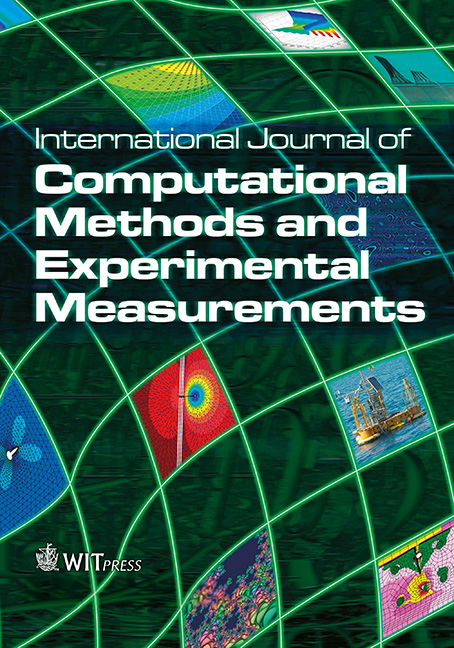NUMERICAL SIMULATION OF CONVECTIVE FLOW IN A NON-DARCY POROUS CAVITY FILLED WITH NANOFLUID
Price
Free (open access)
Volume
Volume 4 (2016), Issue 4
Pages
9
Page Range
454 - 463
Paper DOI
10.2495/CMEM-V4-N4-454-463
Copyright
WIT Press
Author(s)
J. KRAMER STAJNKO, R. JECL & J. RAVNIK
Abstract
Suspensions of nanoscale particles and fluids have been recently subject of intense research, since it was proved that they considerably improve heat transfer capabilities of the fluid which can be crucial in several technological processes. Several applications can be found in the field of porous media flow, such as oil recovery systems, thermal and geothermal energy, nuclear reactors cooling. Since nanofluids are a mixture of a solid and fluid phase, in general, the two phase mathematical model would be the most appropriate to use. However, due to very small size of nanoparticles (1–100 nm) can be assumed, that they behave as a water molecule and a single phase model along with empirical correlations for nanofluid properties can be used. In the present study a convective flow through porous cavity fully saturated with nanofluid is analyzed in detail using the single phase mathematical model based on the Navier-Stokes equations taking into account the non-Darcy parameters. The mathematical model is written at a macroscopic level enabling the simulation of the porous media flow. The solutions are obtained with the in house numerical code based on the Boundary Element Method, which was already proved to have some unique advantages when considering fluid flow problems in different configurations. The effects of the presence of different types of nanoparticles as well as the porous matrix were investigated in detail for different values of governing parameters in order to examine the improved heat transfer characteristics of added nanoparticles.
Keywords
boundary element method, Darcy-Brinkman-Forchheimer formulation, nanofluids, porous medium flow




